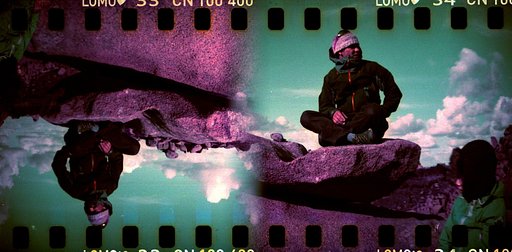Grinding Your Own Focus Screen by Ian Grant
11 27 Share TweetSome of us own and still use cameras that use a glass focus screen, or perhaps need a screen to check the focus on a roll film camera, others even build complete cameras from scratch. More often than not we need new screens
Why make your own screen.
1. Availability, two of the three independent screen manufacturers have ceased trading in the past three years. Screens have to be ordered from the US.
2. Practicality, a new screen can be made in under 15 minutes and the materials are readily available.
3. Economics, making your own screen is extremely inexpensive compared to commercial screens.
4. Customisation, you control the type of screen you require and the degree of fineness.
5. Speed, you can have a new screen in a few minutes.
What you need to get started.
Grinding your own screen is a relatively simple task and the requirements are minimal:
1. The new glass pre-cut to size (2mm thick is ideal)
2. A sheet of Wet & Dry 200 to 400 grit
3. The grinding grit (one or two grades) #400 & #600 Silicon Carbide
4. A piece of glass as the grinding tool (blank) approx 2″×2″ to 3″×3″ (5×5cm to 7.5×7.5 cm)
(Ian uses 1/4" – 6mm thick glass as the grinding blank as it’s easy to handle. See photos.)
Sourcing materials.
Most towns have glass suppliers who will stock 2mm picture glass, this is typically used for framing.
Alternately a picture framers will have the glass and can cut to size.
If you require clipped corners don’t forget to ask.
The Silicon Carbide grits are available from Lapidary suppliers, they are used for stone polishing.
There may be a local stone polishing club, someone there may be able to help with a small amount of Grit.
Costings
The Glass for 15 screens cut to various sizes from 9×12cm to 10”x8” plus 3 grinding blanks cost $16 (£10) and the Grits another $16 (£10)
Prices for Glass & Grits will vary but the two 150-200 gm packs of grit will grind well over 50 screens.
So typically a screen of about 10”x8” works out at roughly $3 (£1.90), a huge saving compared to a commercial screen at .

SAFETY FIRST:
The first task is to remove all sharp edges from the glass which will be used as the grinding blank.
Place a few drops of water on the wet and dry and smooth off all edges & corners taking care not to cut yourself in the process.
The same may be required with the new blank screen, it’s simple & quick.

Place the blank screen on some newspaper, or similar, on a flat surface, wet the back first -it stops the glass sliding.
Put a little #400 grit on the blank screen and add a few drops of water. Now place the grinding blank on top and begin randomly grinding the screen.

After a while (2-3 minutes) add some fresh grit, a few drops more water, and start again.
Make sure that all parts of the screen are being ground and after the second grinding wash the screen well, dry and inspect.
Modern glass is very flat and not prone to hot-spots, but if you used an old lass plate to start with then you have to keep grinding until it’s flat.

Now you have to decide on the final required fineness, for larger screens a final grind with #400 grit is probably all you require.
However for smaller screens a couple of further grinds with #600 grit gives a much smoother finish.

It’s possible to grind a screen with just #600 grit or finer but the process is very much slower.
It’s faster to grind with a coarser grit first then finely grind after.
Finally wash carefully to remove all traces of grinding paste etc and dry, then inspect.
Re-grind if necessary until you are finally satisfied with the screen.
If even finer screens are require then additional grinding with Aluminium Oxide 5 micron or even 3 micron grade can be carried out. However a good screens is a balance of fineness & brightness and #600 grit (approx 12 microns) Silicon Carbide gives a screen that is much finer and brighter than most OEM screens.

The final screen can be as good as any commercially available glass screen, and particularly older screens (pre WWII) which can be improved easily by re-grinding them.
It is also possible to make screens from high grade acrylic and similar materials, however you need to refine the techniques to suit the materials.
If you need a new screen give it a try, it really is remarkably easy.
Ian is a Large Format landscape photographer mainly working with 5”X4” & 10”X8” cameras and sheet film, as well as some 120 roll film in various cameras & formats from 6×4.5 to 6×17. He is also a qualified Industrial Archaeologist and shoots Industrial Landscapes in the UK and more classical Archaeological landscapes around the Aegean & Mediterranean coastlines. He exhibits widely and has an MA (Masters Degree) in Photography
*special thanks to our lovely folks at APUG forum
geschrieben von fookshit am 2010-12-15 in #Ausrüstung #Anleitungen #tutorial #tipster #contributor















11 Kommentare